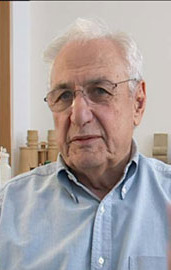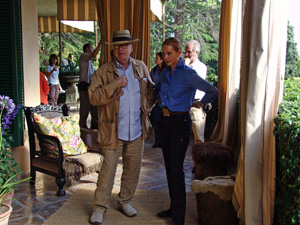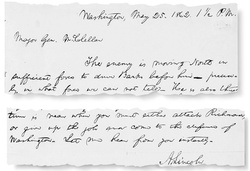 Frank Gehry doesn’t believe in green buildings and he, designer of the signature Guggenheim Bilbao, doesn’t think much of the architect who is probably in most demand by museums — Renzo Piano. (I confess Piano’s popularity is puzzling to me, too; a matter of taste, I’d venture.)
Frank Gehry doesn’t believe in green buildings and he, designer of the signature Guggenheim Bilbao, doesn’t think much of the architect who is probably in most demand by museums — Renzo Piano. (I confess Piano’s popularity is puzzling to me, too; a matter of taste, I’d venture.)
Then there’s a little matter of a museum cartel whose existence Gehry implied.
I’m picking this up from an article in Bloomberg Business Week, which reported on a Q&A session between Gehry and Thomas Pritzker, chairman of the Pritzker Foundation, at the Harold Washington Library in Chicago on Apr. 6. Quoting BW:
What would you think, Pritzker asked him as they sat in hard-backed chairs on an auditorium stage, if a client said he wanted a LEED-certified building? “Oh, great,” Gehry answered in a high, mock-excited voice, as the audience laughed. Then, back in his regular voice, he dismissed environmental concerns as largely political concerns. “A lot of LEEDs are given for bogus stuff. A lot of the things they do really don’t save energy.”
He also said the expense of building to LEED standards often outweighs the benefits. On smaller projects, he said, “the costs of incorporating those kind of things don’t pay back in your lifetime.”
It is true, I have been told, that various LEED points are, well, debatable at best. But to seemingly suggest that it’s all nonsense suggest that Gehry has no interest in the goal.
 But on to sexier things, Gehry’s comments on the architect of the Art Institute of Chicago’s new Modern Wing:
But on to sexier things, Gehry’s comments on the architect of the Art Institute of Chicago’s new Modern Wing:
“He’s gotten better,” he faint-praised Piano, again to laughter. “You know the sibling rivalry between architects. We love each other, but we’re insanely competitive. Even at 81, I still do it. I can’t help myself.”
He suggested that [for the AIC’s new wing] something bold, like his Bilbao museum, would have been a better [sic — the dropped word was probably “choice”]. But he said right after that building opened, the world’s top museum directors got together in London and, according to a friend who was there, voted never to commission another like it. “I think museum curators and directors like the predictable, so it’s all easy,” Gehry said. “A little bit of laziness, maybe.”
Well, well, well. I guess Gehry doesn’t count his pal Tom Krens, former director of the Guggenheim, as having been a top museum director. Krens, of course, commissioned a museum for Lower Manhattan, pre-9/11, that was very much like Bilbao (above).
Also, that sentiment certainly doesn’t square with several museums built since Bilbao that are designed specifically to be spectacular, to be tourist attractions themselves (Denver Art Museum, Art Gallery of Alberta, Centre Pompidou-Metz, etc. etc.).
Sometimes starchitects live in their own reality.

 The
The 
 I’ve strayed again into opera: Today’s Wall Street Journal has my Cultural Conversation with Renee Fleming:
I’ve strayed again into opera: Today’s Wall Street Journal has my Cultural Conversation with Renee Fleming: 
 Instead, it was a total bore. Landesman not only said nothing, but what he did — closing most of the “
Instead, it was a total bore. Landesman not only said nothing, but what he did — closing most of the “
